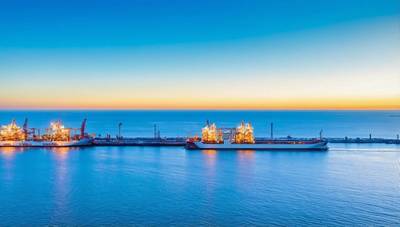Shell anticipates a 60% increase in global LNG demand between 2040 and 2040, with Asia leading the growth.
Shell's annual report said that the global demand for liquefied gas will increase by 60% by 2040. This is mainly due to economic growth in Asia and AI, as well as efforts to reduce emissions in heavy industry and transportation.
As the world moves to cleaner fuels, demand for natural gas is increasing. Shell's 2025 LNG annual outlook forecasted that the industry will demand between 630 and 718 millions metric tons of LNG per year by 2040.
The most recent forecast from the world's biggest LNG trader shows a higher global LNG demand than last year, when it was estimated at 625 to 685 millions tons per annum.
Tom Summers is Shell's senior Vice President for LNG Marketing and Trading. "Updated forecasts show the world will require more gas to meet development goals and decarbonisation targets," said Summers.
Shell said that China and India, which are the two largest LNG importers in the world, will increase their LNG import capacity as well as gas-related infrastructure to meet growing demand.
The demand for natural gas in China is expected to increase this year, as the economic stimulus plans boost industrial demand. However, trade tensions between China and the U.S. could limit growth.
Last year, China imported 131.69 millions tons of natural gas, including pipeline supplies, which was the highest level since 2013. According to China's customs data, 76.65 millions tons of that total volume was LNG.
The International Energy Agency predicts that India's natural gas demand will double between 2023-2030, and its consumption will increase by 60%. This will require the country to import LNG, since the domestic production is expected to grow at a much slower rate than the demand.
The report stated that while a growing population in Algeria, Egypt and Malaysia, as well as economic growth, are driving up the demand for gas in these emerging markets, it is expected to decline by 50 million tons over the next fifteen years, which will result in less gas available for export.
SUPPLY SIDE
Shell said that by 2030, it will be possible to supply more than 170 millions tonnes of LNG, primarily for Asia. Shell has said that the start-up dates of new LNG projects are not certain.
Due to geopolitical tensions in the last two years, regulatory obstacles, labour shortages, and supply chain bottlenecks have caused delays to several LNG projects. This has delayed the availability of 30 million tons of LNG, which is the same amount as India's LNG exports to 2028.
The report stated that in 2024 the global LNG trade will only increase by 2 million tons, to 407 millions tons, due to the constraints of developing new supplies. This is the smallest increase per year since the last decade.
The report indicated that the anticipated supply for the period ranged between 7 and 20 millions tons, but even this low end was below the forecast.
The report predicts that Europe's LNG consumption will grow beyond 2025.
"Europe will need LNG until the 2030s, to balance out the increasing share of intermittent renewables within its energy sector." The report stated that existing natural gas infrastructure can be used in the long term to import bio-LNG, synthetic LNG or green hydrogen.
The United States will be the largest LNG exporter, with a potential growth of 180 million tons per year by 2030. This would represent a third in global LNG supply.
By 2035, analysts expect the United States to provide 60% of global LNG supplies. This is in part due to Qatar's North Field expansion set to be completed by 2026. (Reporting from Marwa Rashad, London; Emily Chow, Singapore; editing by Sonali Paul and David Evans.
(source: Reuters)


